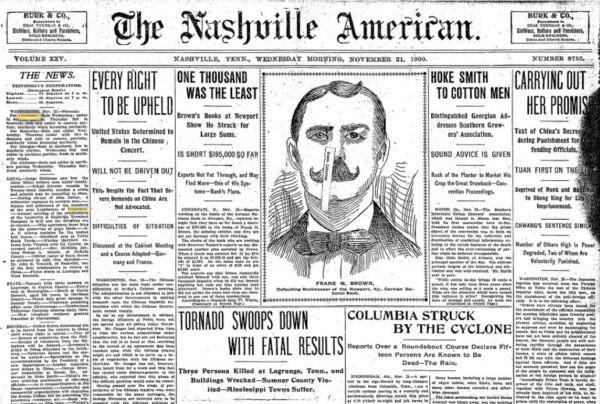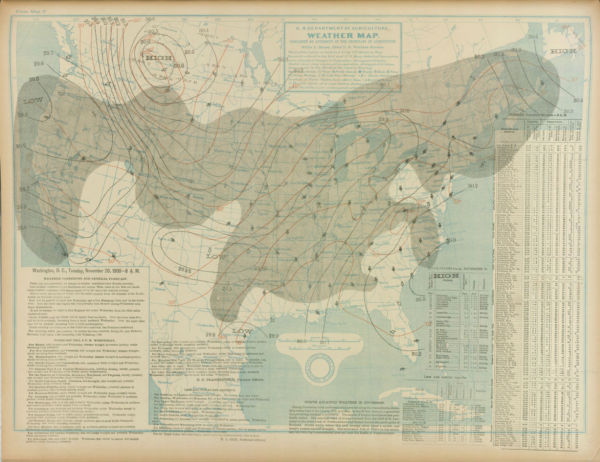November 20, 1900: An Unusual Tornado Outbreak
The afternoon and evening hours of November 20, 1900, turned out to be a very costly one across portions of Arkansas, Mississippi, and Tennessee. Afternoon highs on that day turned out to be abnormally warm for that part of the season, and the air was extremely muggy and uncomfortable as well. Scattered impulse showers would fire up and grow strong very quickly, displaying impressive cloud-to-ground lightning and sudden burst of strong winds. The heavy rain would start falling, but within 5 minutes or less, the sudden storm would diminish as quickly as it began.
Wind was out of the south and southwest until the midday hour, as they subsided to nearly none. The barometric pressure climbed slightly during the morning hours, then dropped rapidly for a few hours, then rose sharply around 3 PM before rapidly falling again through the remainder of the afternoon and early evening hours. Temperatures on the 20th reached the 70s in the mid-afternoon hours before falling into the 60s within the span of a few minutes and continued to slowly drop into the late evening hours.
The first tornado of the event touched down in or near Arkansas County in Arkansas, and moved to the northeast very quickly. It passed just south of Stuttgart at around 1 PM, then continued northeastward through Monroe and Lee counties. The path of damage included wrecked houses and other buildings. Near Stuttgart and Ulm, several dwellings were destroyed and 2 people lost their lives. Nearly the whole town of Moro was completely destroyed, as only 4 buildings were left standing in the town. In all, this twisted killed 6, and was on the ground for 45 miles (1 hour, 15 minutes). It lifted as it approached Crowleys Ridge and apparently was aloft at it passed over Memphis, Tennessee.
The strongest tornado of the evening struck the town of Columbia, in Maury County, Tennessee, at approximately 9:30 PM CST. A very destructive and devastating path was cut through the northwestern parts of town, with the most damage occurring in the Macedonia community. This twister ended up being rated a F4, and was on the ground for a total of 8 miles. The damage path at its widest was 300 yards, littered with pieces of homes and cabins. 27 people lost their lives, and another 75 were injured with this tornado.
By the time the event came to an end for the area during the early morning hours of the 21st, 73 people were killed with hundreds injured. As of the Monthly Weather Review from 1900, the exact money amount of the damage caused by the tornadoes cannot accurately be known, but it was not less than $500,000 (nearly $14 million in today’s economy).
Category: ALL POSTS, Met 101/Weather History



















